District Profile
Background of the District
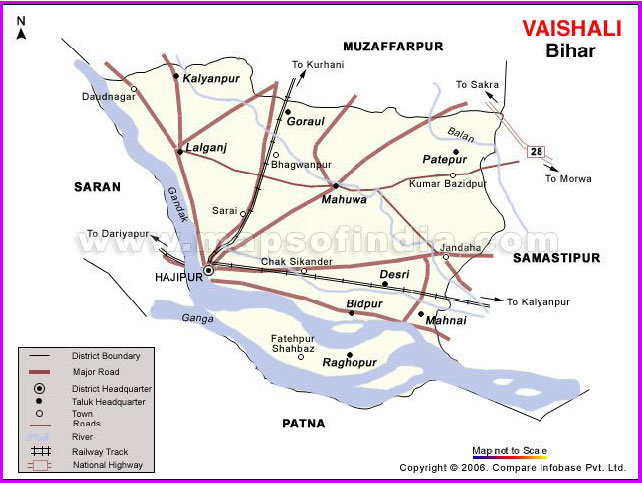
Vaishali find its origin way back in history from the Mahabharata period. It is the place where democracy found its origin around 600BC.
Numerous references to Vaishali are found in texts pertaining to both Jainism and Buddhism, which have preserved much information on Vaishali and the other Maha Janapadas. Based on the information found in these texts, Vaishali was established as a republic by the 6th century BC, prior to the birth of Gautama Buddha in 563, making it the world's first republic.Being the birthplace of the last Jain “Thirthankara” Lord Mahavir gives Vaishali a very special place in history. The founder of Buddhism, Gautam Buddha delivered his last sermon and announced his Parinirvana (attainment of enlightment) on this holy soil. It is also renowned as the land of Ambapali (Amrapali), the great Indian courtesan. It is held that the district derives its name from King Vishal. However, history records that around the time Pataliputra was the centre of political, cultural and economic activities in the Gangetic plains, Vaishali came into existence as centre of the Ganga, it was the seat of the Republic of Vajji. Vaishali is credited with being the World's First Republic to have a duly elected assembly of representatives and efficient administration. Vaishali is also renowned as the land of Ambapali (also spelled as Amrapali), the great Indian courtesan, who appears in many folktales, as well as in Buddhist literature. Ambapali became a disciple of Buddha.
District Profile –District Planning and Monitoring Cell 4 The district gained the status of independent district on 12-10-1972, prior to which it was a part of old Muzaffarpur district. Hajipur, the district headquarters of Vaishali was so named after a King of Bengal named Haji Ilyas Shah (1345 to 1358 A.D) who founded it. He built a fort in Hajipur, with a mosque inside it called Jami Masjid, a building measuring 84.5 ft (25.8 m) long and 33.5 ft (10.2 m) broad, which was called Ukkacala in ancient times.
Geography
The District is spread over 2036 sq km area and has a population of and is located at 25°41′N 85°13′E/ 25.68°N 85.22°E. The district is and is surrounded by Muzaffarpur (North), Patna (South), Samastipur (East) and Saran (West). The district has 3 subdivisions, 16 blocks, 290 Gram Panchyat & 1572 villages. The location of Vaishali and its blocks shown below in.
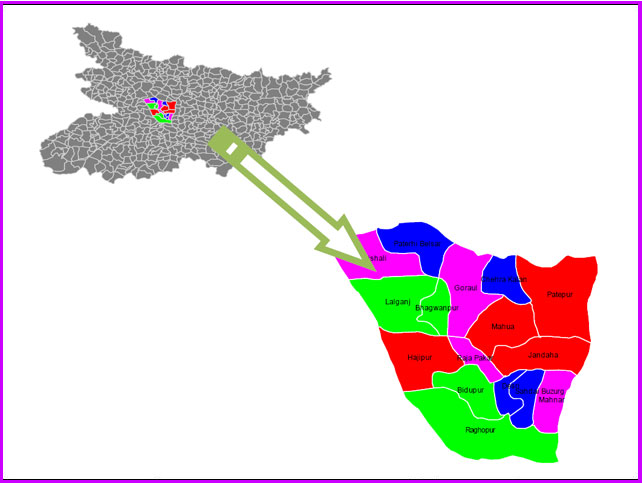
The Hajipur town is bounded by Narayani Gandak River in west and holy Ganga River in south. Famous Mahatma Gandhi Setu (5575m long) over river Ganga connects it with the state capital Patna; while another rail and road bridge over Gandak connects it with Sonepur, headquarter of a railway subdivision under ECR. The plain terrain of town and its nearby places is famous for banana, Litchi and mango plantations. The region looks green with plants and trees growing in semi-tropical monsoon climate. However, months of May-June are hot and December-January is cold.
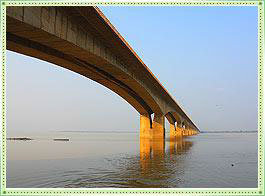
Language
The language spoken by people in daily life is Hindi. Other than Hindi the most popular language is “Bajjika”. The dialects are not in pure form rather people prefer to use mixed dialect.
Famous Sites In Vaishali
Relic Stupa
This is one among the eight stupas built over the remains of Buddha. According to Buddhist traditions, after he attained Mahaparinirvana (forsaking his earthly body), the Malla kings in Kushinagara cremated his body in a royal ceremony befitting a Universal King. The ashes were distributed to eight different kingdoms. This was originally a small stupa, 8 meters in diameter constructed in 5th century BC. Later during the Maurya, Sunga and Khushan period, it was expanded to 12 meter. Excavation was carried out by Archaeological Survey of India in 1968 found a relic casket made of stone partly filled with ashy earth besides a conch, two glass beads, a fragmentary piece of gold leaf and an embossed copper coin.
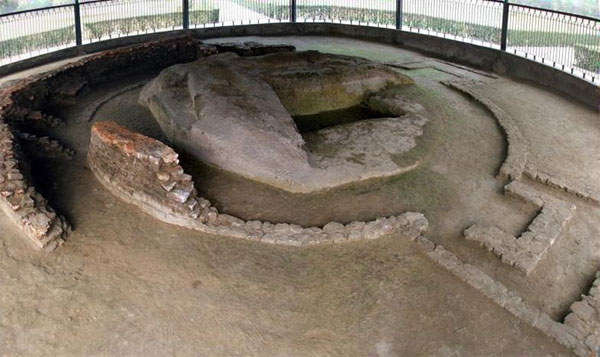
Here the Licchavis reverentially encased one of the eight portions of the Master's relics, which they received after Mahaparinirvana. After his last discourse the Awakened One set out for Kushinagar, but the Licchavis kept following him. Buddha gave them his alms bowl but they still refused to return. The Master created an illusion of a river in spate which compelled them to go back. This site can be identified with Deora in modern Kesariya village, where Ashoka later built a stupa.
Kutagarasala Vihara
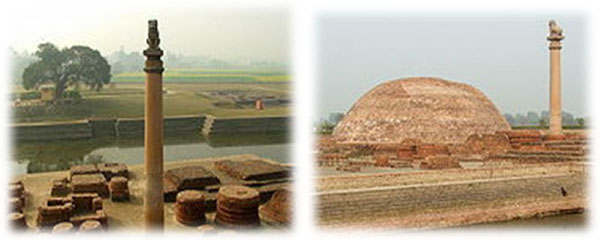
Kutagarasala Vihara is the monastery where Buddha most frequently stayed while visiting Vaishali. It is located 3 kilometres from the relic Stupa, and on its ground can be found the Ananda stupa , with an Ashokan Piller in very good condition (perhaps the only complete Asokan pillar left standing), and an ancient pond.
Coronation Tank
A few hundred metres from the Relic Stupa is Abhishek Pushkarini, the coronation tank. The sacred waters of the tank anointed the elected representatives of Vaishali.
World Peace Pagoda
Next to the coronation tank stands the Japanese temple and the Viśvā Śānti Stūpa (World Peace Pagoda) built by Japanese Nichiren Buddhist sect Nipponzan-Myōhōji. A small part of Buddha's relics found in Vaishali have been enshrined in foundation and in the chhatra of the Stupa.
Raja Vishal ka Garh in Vaishali
A huge mound with a circumference about one Kilometer and walls nearly 2 m high with a 43m wide moat around them, is said to be the ancient parliament house. Over seven thousand representatives of the federal assembly gathered here to legislate and discuss the problems of the day.
Connectivity
Hajipur is well connected to the rest of the sate and India by rail, road and air connections.
By Air
Patna the capital city of Bihar is the nearest Airport from Vaishali. Patna is linked by regular flights to important cities like: Delhi, Kolkata Varanasi, Lucknow and so on. One can also reach Patna from Katmamdu.
By Road
A convenient road network covers Vaishali connecting it to a number of important cities in Bihar, such as: Patna (55 km), Muzaffarpur (37 km), which are in turn linked to rest of the country. Other important destinations in Bihar, namely; Bodhgaya (163kms), Rajgir (145kms), Nalanda (140kms) lie close by.
By Rail
The nearest railhead is Hajipur, which is only 2.5 kms away from Vaishali. Important trains service the railway station of Hajipur regularly. One can approach Hajipur from major cities all over India like: Delhi, Kolkata, Mumbai, Chennai and Varanasi.
Administrative Set Up
The district comprises of three administrative Sub-divisions namely Hajipur, Mahnar and Mahua which are again divided into 16 Blocks and 16 Anchals. It has 290 panchayats and 1572 villages. Out of the 1572 villages (please check on the top you commented there are 1638 villages) 155 are unhabited.
| Sub-Division | Block | Anchal |
|---|---|---|
| Hajipur | Hajipur Raghopur Bidupur Lalganj Vaishali Bhagwanpur Patedhi Belsar |
Hajipur Raghopur Bidupur Lalganj Vaishali Bhagwanpur Patedhi Belsar |
| Manhar | Desri Sahdei Buzurg Mahnar |
Desri Sahdei Buzurg Mahnar |
| Mahua | Mahua Rajapakar Goraul Jandaha Patepur Chehrakala |
Mahua Rajapakar Goraul Jandaha Patepur Chehrakala |
Panchayat and Village Wise distribution of Blocks
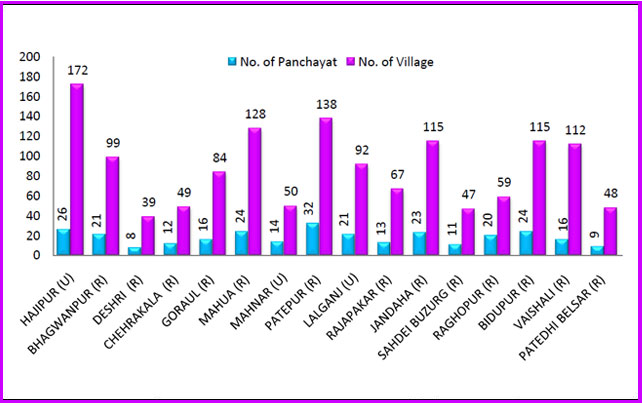
Source : SEEP (SSA); 2008-09







